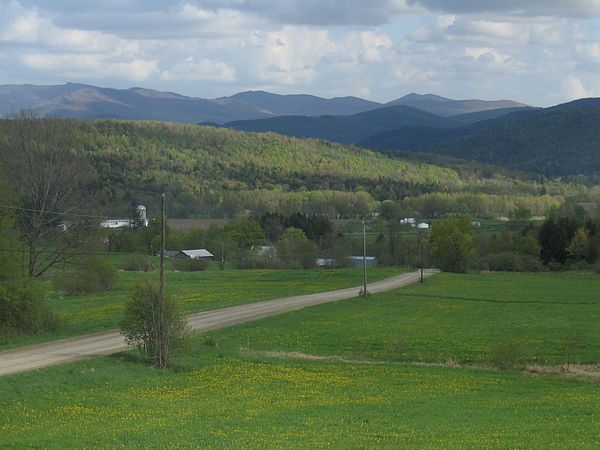On Town Meeting day, Montgomery voted to establish a Municipal Conservation Reserve Fund. This is the second such fund established in the CHC region, with Enosburgh voters establishing a Conservation Reserve Fund fund in 2011. These town funds can be paired with our Land Conservation Fund to offset the cost of conserving land in the Cold Hollow Mountain region.
What is it?
A municipal Conservation Fund is a dedicated fund set up by a town to be used to protect land and waters for conservation purposes. Uses of the fund may be to conserve land for agricultural, working forest, wildlife, scenic, recreational, and natural area use. The land to be conserved may be bought outright, or protected by the purchase of a conservation easement. The first local conservation fund in the state, the Norwich Conservation Trust Fund, was established in 1974. Since then close to 50 more municipalities have created such funds.
Why should a town create a Conservation Fund?
A conservation fund...
- Enables the town to participate in important conservation projects, focusing on local priorities and advancing local goals, as articulated in the Town Plan
- Allows the town to tap into matching funds. In a very competitive environment, a local conservation fund can provide leverage for Federal, State and private funds. Many sources of conservation funding require community participation in projects they will support.
- Allows the town to be responsive to short-term opportunities
- Can create real economic benefits. Research has shown that land conservation can help a town by reducing property tax burdens on local residents, improving property values, attracting business investment, reducing spending on infrastructure, promoting healthy lifestyles and public health.
- Allows the town to support private easement donations, supporting the generosity of our neighbors who which wish to protect their own lands for the public good in perpetuity. The donation of an easement can cost a landowner upwards of $10,000.
How can a town spend this money?
This can vary from town to town based on local priorities. Once established, the Selectboard will develop a clear policy and criteria for use of the funds, usually following purpose statements derived from the goals, objectives, and actions included in most recent Town Plan. These will generally focus on protecting natural resources, scenic resources, or recreational resources. Funds could be used for:
- New town forests
- Protecting historic resources
- Restoration of town land
- Easements that protect public access
- Easements that protect public values (local food, open space protection, scenic views)
- Protect drinking water sources, shoreline protection, and water quality
- Purchase options on land
- Improve recreation or hunting access
- Support local grant and loan programs
What have others towns around us done with these funds?
- The town of Enosburgh purchased and conserved a canoe launch access along the Mississquoi River. The town is working with landowners seeking to donate conservation easements on both scenic fields, and a sugarbush used by the Cold Hollow Career Center.
- The town of Georgia recently purchased and conserved a new Town Forest, to be maintained as a working forest, providing periodic income, while providing recreational and educational opportunity, as well as protecting source waters
- The town of Westford recently purchased and conserved a new town forest and adjacent agricultural fields near the Elementary school. The fields have been transferred to a local farmer, and development of recreational trails is underway, connecting the school to the village center.
What will this cost the taxpayer?
This also can vary based on how a town decides to appropriate funds. The Montgomery fund will be supported by a ½ penny increase in the tax rate, to be re-affirmed annually by the voters of Montgomery. This translates to about $5.00 per $100,000 of valuation on an individual tax bill and will garner about $6,000 in 2018. Enosburgh uses a similar mechanism. Capital for local funds could also come from voluntary contributions or grants from public or private sources. A town may also make appropriations to the fund from time to time instead of tying it to the tax rate.
Interested in starting a Conservation Reserve Fund in your town?
Get started now. It takes time to lay the groundwork and garner support, and Town Meeting will be coming around again before you know it. Have questions about where to start? Let us know. That’s what we’re here for.
